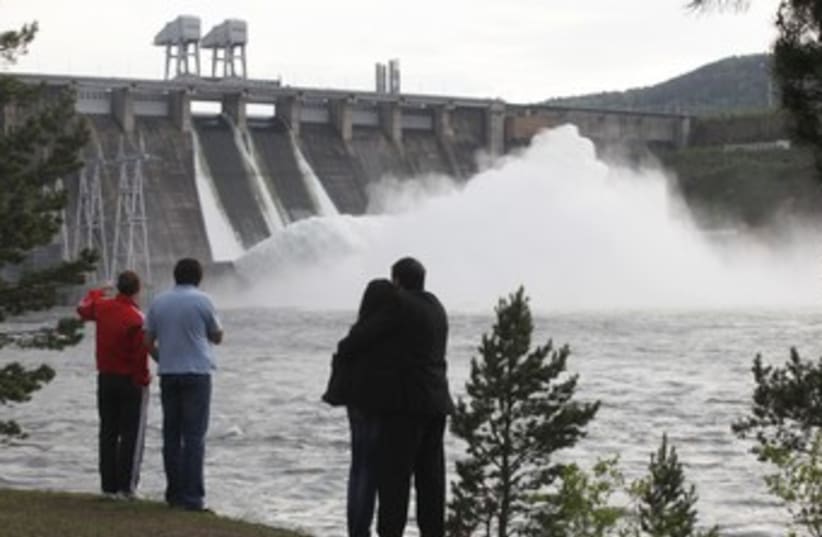
Against the background of the continuing Iranian-Israeli tensions, it may be useful to take another look at what is at stake. Iran is a large country comprising some 1,600,000 square kilometers, Israel a very small one with just about 28,000, the Golan Heights, the West Bank and the Gaza Strip included. In terms of population the difference is as 88,000,000 to 9,500,000. Short of dropping some nuclear bombs on a few key Iranian cities, how can David expect to fight Goliath and win?
For one possible answer, consider the following. Iran is a country of many mountains, quite a number of rivers—none very long, incidentally—and dams. Out of a total of 183 currently operational dams, 52 are related to the Caspian Sea catchment area. 12 are based in the Urmia basin further to the southwest, 68 are located in the Persian Gulf and the Gulf of Oman watersheds, 34 are in the Central Plateau, 11 are in Sarakhs catchment basin, and other dams are located across the eastern boundary basin (Hamoun). Most are serving one or more of the following four purposes. 1. Flood control. 2. Providing drinking water. 3. Agricultural irrigation. 4. Electricity-generation.
The biggest dam is the Karkheh Dam (capacity 5,900,000,000 cubic meters). Next come the Bakhtiari Dam (4,845,000,000 cubic meters), the Dez Dam (3,340,000,000), the Seimarem Dam (3,200,000,000), the Chamshir Dam (2,300,000,000), the Karun 4 Dam (2,000,000,000), the Marun Dam (1,200,000,000), the Lar Dam (960,000,000), the Sardasht Dam (545,000,000), the, the Daryan Dam (316,000,000), the Ashavan Dam (260,000,000), the Mamloo Dam (250,000,000), and the Al Kabir Dam (202,000,000). The maximum capacity of all dams combined is believed to be around 55,000,000,000 cubic meters.
Simply gathering the vast amounts of data needed to asses what a coordinated attack on these and other dams could do to the country would require entire regiments of experts. The more so because many of the details are unavailable to the public. It is, however, worth-while to bring up the following story. In May 1941 the officers at the Africa Corps headquarters were a worried lot. This is surprising, given that the corps, brilliantly led by General Erwin Rommel, had just completed a spectacular 1,100-kilometer advance that took it from the gates of Tripoli all the way to Sallum, a small village just east of the border between Italian Libya and British-ruled Egypt. Measured in terms of driving distance the figure was even larger. Should the German advance continue it would soon reach the Nile. And that was just what the Germans were worried about. Suppose the British, ere they abandoned Egypt and retreated into the Sinai and from there into Palestine, blew up the Aswan Dam; what would happen then?
A coded message—chefsache, nur durch Offizaier—went out to the General Staff. From there it was passed on to the experts of the newly founded Wehrtechnische Fakultaet, the newly-founded Military-Technological Faculty of the University of Berlin. It took a few days before a reply was received. When it did, it pointed out that the capacity of the Dam—meaning, the old British-built one that had been completed in 1902 and was by far the largest in the world until that time—was 5,300,000,000 cubic meters (5.3 cubic kilometers) of water. Just what so much water could do to the vulnerable land to the north depended on many variables. However, provided the demolition job was carried out in the right way (starting from the middle and working its way in both directions, rather than the other way around) and during the right season of the year (starting in July and lasting until November) it would occasion a monstrous wave, thirty to forty meters high, drowning everything in its path to the Mediterranean. Including, some 690 kilometers away, the capital of Cairo which at that time was a city of a million and a half out of a total of about 18,000,000.
In terms of capacity, several of the Iranian reservoirs are comparable with the one created by the Old Aswan Dam. Surely there must be something for the Mullahs to think about here?
